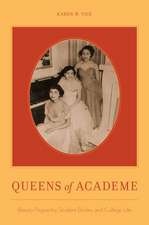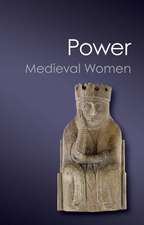Nursing, Physician Control, and the Medical Mono – Historical Perspectives on Gendered Inequality in Roles, Rights, and Range of Practice
Autor Thetis M. Group, Joan I. Robertsen Limba Engleză Hardback – 2 oct 2001
In Part I, Thetis M. Group and Joan I. Roberts present the activities of early women healers and nurses. The authors document the erosion of these women's independence and influence, as increasingly they were subordinated to physician control and authority.
In Part II they examine nurse-physician relations from the early 1900s onward. The sexist domination of nursing by medicine was neither haphazard nor accidental, but a structured and institutionalised phenomenon. Efforts by nurses to achieve greater autonomy were often blocked by hospital administrators and organised medicine. The consolidation of the medical monopoly during the 1920s and 1930s, along with the waning of feminism, led to the concretisation of gendered stereotyped roles in nursing and medicine. The growing unease in nurse-physician relations escalated from the 1940s to the 1960s; the growth and complexity of the health-care industry, expanding scientific knowledge, and increasing physician specialisation all created heavy demands on nurses.
Conflict between organised medicine and nursing entered a public, open phase in the late 1960s and 1970s when medicine unilaterally created the physician's assistant, countered by nursing's development of the advanced nurse practitioner. The issue of nursing autonomy was directly related to the re-emergence of feminism, bringing into question the stereotype of nurse as physician's loyal "right arm." At the same time, consumers were increasingly unhappy with the inadequate, fragmented, and costly health care system.
The gender stereotypes that remained central to nurse-physician relations in the 1980s and into the 1990s are documented in Part III. Various media portrayals still show nurses as subservient to physicians. Nevertheless, nurses have become more outspoken in their criticisms of organised medicine, lobbying to change antitrust laws, proving their cost effectiveness, and documenting the quality of their patient care, consistently equal to or better than that of physicians.
Finally, Thetis Group and Joan Roberts examine the results of the medical monopoly, from the impact on patients' health and safety, to the development of HMOs and the current overpriced, poorly co-ordinated and fragmented health care system. Medicine's monopoly of health care and its domination over nursing has made it difficult for nurses to enact their own values, change state license and practice laws, and broaden their access to and practice with patients. Their commendable efforts to gain more autonomy and independence continue into the 21st century.
Preț: 319.27 lei
Nou
Puncte Express: 479
Preț estimativ în valută:
61.09€ • 63.78$ • 50.56£
61.09€ • 63.78$ • 50.56£
Carte tipărită la comandă
Livrare economică 04-18 aprilie
Preluare comenzi: 021 569.72.76
Specificații
ISBN-13: 9780253339263
ISBN-10: 025333926X
Pagini: 560
Dimensiuni: 156 x 235 x 15 mm
Greutate: 0.93 kg
Editura: MH – Indiana University Press
ISBN-10: 025333926X
Pagini: 560
Dimensiuni: 156 x 235 x 15 mm
Greutate: 0.93 kg
Editura: MH – Indiana University Press
Cuprins
Contents
Acknowledgements
General Introduction
Nursing, Physician Control, and the Medical Monopoly: An Overview
Part I. "Exposing the Meretricious Lies": Early Women Healers and Nurses and the Mythology of Medicine's "Natural" Supremacy Over Healing
1. "The Mere Trivia of History?" The Legacy of Early Women Healers and Physicians' Efforts to Exclude or Control Them
2. "She Hath Done What She Could": Reforming Nursing as Physicians Tighten the Medical Monopoly in Great Britain, 1800s to the Early 1900s
3. The Search for American Nursing Origins: Differing Approaches to the History of Nursing and the Medical Monopoly in the United States, 1800s to the Early 1900s
Part II. The Purposeful Move Toward Dominance: Subordinating Nurses and Achieving a Medical Monopoly
4. "For Their Own Good": Physicians Manipulating, Trivializing, and Coercing Nurses, Later 1800s to 1920s
5. "The Exclusive Guardians of All Matters of Health": The Consolidation of Medical Monopoly in the 1920s and 1930s
6. A Growing Unease: Nurse/Physician Inter-professional Relations from the 1940s to the 1960s
7. Reconciling Practice with Protest and Confrontation with Co-operation: Nurse/Physician Relations in the 1970s
Part III. An Outdated, Burdensome Model of Monopolistic Control: Entering the 21st Century with a Fractured Health-Care System and Continuing Medical Opposition to Nurses' Autonomy
8. Who Needs the Autonomous Professional Nurse? Gender Stereotypes Remain Central to Nurse-Physician Relations
9. Challenges to the Medical Monopoly: Nurses' Gains in Direct Payment, Hospital Privileges, Prescriptive Authority, and Expanded Practice Laws
10. The Results of the Medical Monopoly: "A Regulatory and Policy-Making Quagmire"
References
Index
Acknowledgements
General Introduction
Nursing, Physician Control, and the Medical Monopoly: An Overview
Part I. "Exposing the Meretricious Lies": Early Women Healers and Nurses and the Mythology of Medicine's "Natural" Supremacy Over Healing
1. "The Mere Trivia of History?" The Legacy of Early Women Healers and Physicians' Efforts to Exclude or Control Them
2. "She Hath Done What She Could": Reforming Nursing as Physicians Tighten the Medical Monopoly in Great Britain, 1800s to the Early 1900s
3. The Search for American Nursing Origins: Differing Approaches to the History of Nursing and the Medical Monopoly in the United States, 1800s to the Early 1900s
Part II. The Purposeful Move Toward Dominance: Subordinating Nurses and Achieving a Medical Monopoly
4. "For Their Own Good": Physicians Manipulating, Trivializing, and Coercing Nurses, Later 1800s to 1920s
5. "The Exclusive Guardians of All Matters of Health": The Consolidation of Medical Monopoly in the 1920s and 1930s
6. A Growing Unease: Nurse/Physician Inter-professional Relations from the 1940s to the 1960s
7. Reconciling Practice with Protest and Confrontation with Co-operation: Nurse/Physician Relations in the 1970s
Part III. An Outdated, Burdensome Model of Monopolistic Control: Entering the 21st Century with a Fractured Health-Care System and Continuing Medical Opposition to Nurses' Autonomy
8. Who Needs the Autonomous Professional Nurse? Gender Stereotypes Remain Central to Nurse-Physician Relations
9. Challenges to the Medical Monopoly: Nurses' Gains in Direct Payment, Hospital Privileges, Prescriptive Authority, and Expanded Practice Laws
10. The Results of the Medical Monopoly: "A Regulatory and Policy-Making Quagmire"
References
Index
Descriere
This history of physicians' efforts to dominate the healthcare system reviews the activities of early women healers and nurses, and examines the nurse-physician relationship. The authors then examine the results of medical monopolies, from the impact of patients' health and safety, to the development of HMOs and the current overpriced and fragmented healthcare system.















